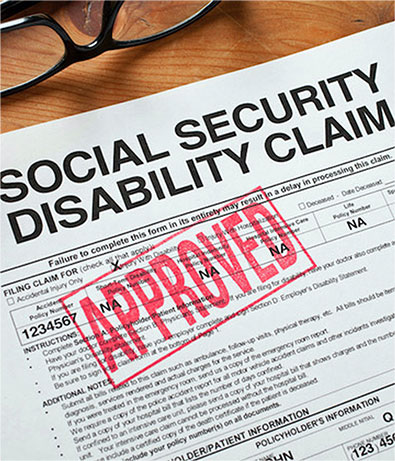What’s Behind the Five-Month Wait for Social Security Disability Benefits?
For anyone approved for Social Security Disability Insurance (SSDI) benefits, a mandatory five-month waiting period applies before receiving any payments. The waiting period starts from the first full calendar month following the date your disability began. Social Security essentially withholds five months of approved benefits, either before initiating your monthly payments or deducting the amount from any retroactive benefits.
Exceptions to the Rule: Cases Where the Five-Month Wait Doesn’t Apply
Although the five-month wait is standard, there are a few exceptions:
- Supplemental Security Income (SSI) benefits: There’s no waiting period for SSI, but payments can only start from the date you filed your application. If approved with a remote alleged onset date, your benefits will only commence after your filing date.
- Reinstatement of benefits: If your SSDI benefits were previously approved but later stopped, you won’t need to wait another five months upon reinstatement, as long as it’s within five years from the initial onset date.
- Dependent or auxiliary benefits: Dependents aren’t subject to the five-month waiting period.
- Amyotrophic lateral sclerosis (ALS): If your disability stems from ALS, you’re exempt from the five-month waiting period.
Why the Five-Month Wait Exists
The purpose behind the five-month waiting period is to prevent payments for short-term disabilities. The SSDI program mandates a 12-month durational requirement, meaning you must demonstrate disability for a minimum of 12 months or be expected to meet the Social Security Administration (SSA)’s definition of disability for that duration. The five-month wait helps ensure that only those with long-term disabilities receive benefits. Additionally, it functions as a processing fee for the SSA to review your application.
Navigating the Application Process for Social Security Disability Benefits
Applying for SSDI benefits can be a complex and time-consuming process, involving online, in-person, or phone applications. Social Security reviews your claim to ensure it meets technical and medical requirements. Applicants must have worked long enough and paid enough taxes on their earnings to be eligible for coverage.
To qualify, you must not be engaging in “substantial gainful activity,” earning above a specific monthly threshold. In 2021, this limit was set at $1,310 a month in gross income. If you meet technical requirements, the SSA evaluates your medical claim using a five-step sequential evaluation process, assessing your conditions, ability to work, and availability of jobs in the national economy.
If deemed disabled, you can calculate your retroactive benefits, or determine when your monthly benefits will start, with the five full calendar months from your initial disability date.
The Future of the Five-Month Waiting Period
There have been discussions about eliminating the five-month waiting period, as was done for ALS patients. However, no changes have been made yet for other conditions. Applying for disability benefits is complicated, with numerous exceptions and intricate regulations. To maximize your eligible benefits, it’s wise to consult professionals, such as the LaBovick Law Group, who can help navigate the process and fight for the benefits you’ve earned.
Frequently Asked Questions about the Five-Month Waiting Period for SSDI
What is the five-month waiting period for disability benefits?
The five-month waiting period is the mandatory time that Social Security withholds from your approved SSDI benefits before starting your monthly payments or deducting from your retroactive benefits.
Are there any exceptions to the five-month waiting period?
Yes, exceptions include Supplemental Security Income (SSI) benefits, reinstatement of benefits within five years, dependent or auxiliary benefits, and disability resulting from ALS.
Why does the five-month waiting period exist?
The waiting period is in place to ensure that SSDI benefits are not paid to people with short-term disabilities. It also serves as a processing fee for the Social Security Administration to review your application.
How do I apply for Social Security Disability benefits?
You can apply for SSDI benefits online, in person, or via phone. The application can take anywhere from 1-2 hours, depending on the extent of your information.
What is substantial gainful activity (SGA), and why is it important?
Substantial gainful activity refers to a specific monthly income threshold set by the SSA. If you are earning above the SGA limit, you are deemed technically ineligible to receive disability benefits. In 2021, the SGA was defined as $1,310 a month in gross income.
What is the five-step sequential evaluation process used to assess medical claims?
The SSA uses a five-step sequential evaluation process to determine your eligibility for disability benefits, considering factors such as substantial gainful activity, severity of impairment, listed conditions, past relevant work, and other work available in the national economy.
Are there any plans to eliminate the five-month waiting period?
There have been discussions about eliminating the five-month waiting period, following its removal for ALS patients. However, no changes have been made for other conditions as of now.
Where can I seek assistance in applying for disability benefits?
For help navigating the complex process and ensuring you maximize your eligible benefits, consider consulting professionals such as the LaBovick Law Group.




